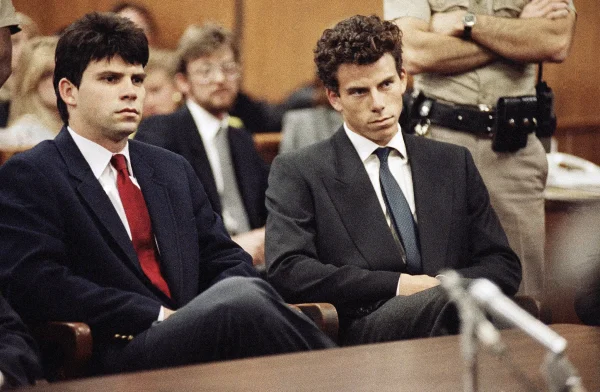An argument against the opioid epidemic
In the world we live in today, more than two million Americans in just the United States alone die or are addicted to opioids yearly.
In 2017, more than 47,000 Americans died as a result of opioid overdose. Many of these deaths were caused by addictive drug abuse, including prescription opioids, heroin, and illicitly manufactured fentanyl. These drugs are considered powerful synthetic opioids. In the same year, an estimated of 1.7 million people in the United States suffered from substance use disorders related to prescription opioid pain relievers.
Opioids are a class of drug that includes illegal drugs like heroin. Some other addictive drugs that are opioids are oxycodone, hydrocodone, codeine, morphine, and many others. Synthetic opioids such as fentanyl and pain relievers are available legally by prescription.
Ann Marie is a mother to her late son Christopher, who died from overdosing on opioids. Christopher was in a minor car accident and was prescribed opioids for back pain. Christopher’s tolerance grew quickly, and he sought doctors who would prescribe him more opioids. He increased his intake of opioids from one pill a day to twenty-five. Unfortunately, Christopher died at the age of 22 because of his addiction.
Christopher’s story is just one example of many young people who have succumbed to drug addiction. Sadly, the added obstacle of legally prescribed drugs has created a massive issue in this country.
The history of the opioid crisis and addiction to opioids, has been around for 28 years. These years are the only years that we as American people know about. The opioid epidemic has occurred in three different waves.
The first wave of the opioid epidemic began in 1991, when there was an increase of opioid related deaths. During this time, doctors were only prescribing opioids to patients with cancer related pains. However, studies show that these deaths were increasing due to over prescribing for non-cancer related pains.
The increase of opioid prescribing was influenced by pharmaceutical companies and medical societies during that time period. According to Poison Control, the pharmaceutical companies and medical societies were claiming that the chances of being addicted to opioids were very low.
The next wave was in 2010, with a rapid increase of heroin related deaths. As efforts were taken to decrease the overprescribing of opioids, people’s focus turned to potential illegal drugs, such as heroin which is more widely available and cheaper. Approximately 80% of heroin users admitted to misusing prescription opioids before turning to heroin, according to poison control.
Again in 2013, pharmaceutical companies reassured the medical community that patients would not become addicted to prescription opioid pain relievers. So, the medical community started prescribing opioids at higher rates depending on the patient’s rate of pain. This subsequently led to widespread misuse of these drugs before it became clear that these medications could indeed be highly addictive.
When a person repeatedly takes opioids to relieve pain or for other uses, other sensations from the medication are produced. When opioids are taken they activate neurotransmitters in the brain. Two specific neurotransmitters that activate addictive properties are dopamine and serotonin. Once the brain is full of these neurochemicals, the pleasure center parts of the brain are activated. When users crave these sensational feelings over and over again they tend to want more of what is pleasing them.
The misuse of opioids and the addiction to them is a serious national crisis that has affected public health as well as social and economic welfare. On October 26, 2017, President Trump announced that his administration was declaring an opioid crisis as a national Public Health Emergency under federal law.
“I am directing all executive agencies to use every appropriate emergency authority to fight the opioid crisis,” the president said.
Since President Donald Trump took office in 2017, more than $1 billion dollars has been allocated or spent directly towards the opioid crisis.
In response to the opioid crisis, the U.S. Department of Health and Human
Services (HHS) is focusing its efforts on five major priorities: improving access to treatments and recovery services, learning more about the epidemic, advancing better practices for pain management, to provide new innovative medications and technologies to treat opioid use disorders, according to the U.S. Department of Health and Human Services.
With all of these “solutions” why is the opioid crisis still among us, you may ask? The answer would be that giving too many small prescription drugs can lead to high addiction toward illegal narcotic drugs, such as methamphetamines and heroin. The reason many people get addicted to these opioids is because of the mass legal prescribing of these addictive drugs.
In May of 2018, the Food and Drug administration approved the first non-opioid treatment to manage opioid withdrawal symptoms. Lucemyra (lofexidine hydrochloride) can be prescribed by doctors for adults for up to 14 days.
The FDA noted that although this new treatment can reduce the severity of withdrawal symptoms, lofexidine hydrochloride may not completely prevent withdrawal symptoms.
In addition, the FDA noted that this new medication is not a treatment for opioid use disorder (OUD). However, lofexidine hydrochloride can be used as part of a broader, long-term treatment plan for managing opioid use disorder.
In an interview with Mr. James Leary, Dean of Naugatuck High School schools, we discussed how the opioid epidemic has not only affected the students in NHS, but the environment of Naugatuck High School.
“I’m aware of the opioid epidemic in the state of Connecticut, and even that it has affected the town of Naugatuck. I have concerns that has affected some students, I can’t say that I know for sure that there are students who are using or who are addicted. But I do have suspicions that there are some; I don’t think I can speak directly, that yes we definitely have some kids who are, but I definitely have my suspicions and concerns,” Leary commented
Many people have concerns of how Naugatuck High School takes action when a student is found with prescribed drugs or illegal drugs in their possession.
“When a student is caught with something like that our policy is a mandatory 10 day suspension, and the student is arrested. We go immediately to NPD Officer Saint George for the arrest. The court system has their way of dealing with them, there’s often community service, mandatory drug counseling and programs like that. As a school, we can even go as far as expulsion for a student with an opioid. We typically reserve expulsion for someone who is selling or distributing drugs, but when it’s something that serious it is definitely considered for expulsion,” continued Leary.
If a student is caught with carrying prescribed drugs intended for that student, the consequence is the same.
There are a lot of people who can spot a potential opioid user. Some of the features of that person can be very obvious and some of the features can be hidden.
“I’m certainly not an expert, but I think you can definitely see behavior changes. You see appearance changes often, the skin looks different, teeth look different. Opioid users tend to be dehydrated a lot. Their skin is often very dry, they often don’t take care of themselves, they are not as worried about hygiene, appearance, hair and clothing. So, stuff like that so you can tell.” Mr. Leary said.
With all the potential hope in ending the opioid epidemic, affirm health has recorded that there has been a slight decrease in opioid related deaths since 2016.

I am a junior who would like to go to school to become a psychologist. I enrolled in Journalism because I enjoy writing and discussing topics that interest...








